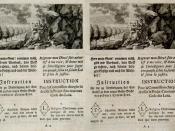Many historians agree that despite Catherine's personal weaknesses, she was above all a ruler truly dedicated to her adopted country. She intended to make Russia a prosperous and powerful state and since her early days she had dreamed of establishing a reign of order and justice, of spreading education, creating a court to rival Versailles, and developing a national culture that would be more than an imitation of French models. Her projects obviously were too numerous to carry out, even if she could have given her full attention to them, yet she seemed determined to achieve her goals, and from the beginning of her reign began to impose reforms in order to do so.
On of the main things she wished to achieve was to replenishment of the state treasury, which was empty when Elizabeth died. She did this in 1762 by secularising the property of the clergy, who owned one-third of the land and serfs in Russia.
The Russian clergy was reduced to a group of state-paid functionaries, losing what little power had been left to it by the reforms of Peter the Great. Since her coup d'etat and Peter's suspicious death demanded both discretion and stability in her dealings with other nations, she continued to preserve friendly relations with Prussia, Russia's old enemy, as well as with the country's traditional allies, France and Austria.
In 1764 she resolved the problem of Poland, a kingdom lacking definite boundaries and coveted by three neighbouring powers, by installing one of her old lovers, Stanislaw Poniatowski, a weak man entirely devoted to her, as king of Poland. Her attempts at reform, however, were less than satisfying. A follower of the English and French liberal philosophers, she saw very quickly that the reforms advocated by Montesquieu or Jean-Jacques Rousseau, which were difficult...


